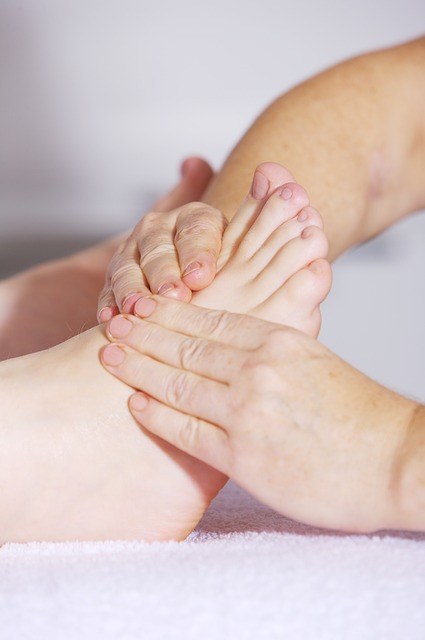Morton’s neuroma is nerve pain that occurs between the toes due to a thickening in the area surrounding the nerves that branch out to the toes. People with Morton’s neuroma often feel pain or numbness under the toes, between the toes, or on the ball of the foot. The pain often radiates between the 3rd and 4th or 2nd and 3rd toes.
Some people describe a burning sensation or the feeling that they are stepping on a small stone. This forefoot pain interferes not just with cycling, but also with walking any other physical activities.
Causes of Morton’s Neuroma in Cyclists
Tight shoes – Shoes that are too tight, especially around the bridge of the foot and the toes can lead to Morton’s neuroma. As cyclists ride, their feet often swell slightly. This swelling can increase the pressure on the nerves of the foot and, over time, can cause a thickening of the tissues of the foot, leading to a progression of pain. High-heeled shoes may also contribute to the development of Morton’s neuroma pain, so do avoid them, if possible.
Abnormalities of the Foot – Our feet and ankles are complex and comprised of 33 joints, 26 bones, and over 100 ligaments, tendons, and muscles. Abnormalities of the feet, like bunions, flat feet, or hammertoes, can cause a redistribution of the weight your feet carry. This puts you at an elevated risk of developing Morton’s neuroma.
Repeated Impact – Running and high-impact sports place stress on the muscles and bones in the feet. This can lead to a swelling or thickening of the tissue surrounding the nerves, which is, by definition, Morton’s neuroma.
For a free legal consultation,
call 1-844-242-9253
Treatment of Morton’s Neuroma in Cycling
Treatment of Morton’s neuroma in cycling is most effective when it begins soon after symptoms first arise. Waiting for symptoms to worsen can aggravate the tissues further and can result in more prolonged treatment or even the need for surgery. If you suspect you have Morton’s neuroma, visit your physician for treatment.
Treatment recommendations may include:
Foot support – Arch supports and orthotics can help prevent nerve compression and can alleviate pressure points. These supports can also reduce foot fatigue and discomfort. If your podiatrist suggest an orthotic, ask for one that is suited for use when cycling.
Wide Toe Box – Choose shoes that have a wide toe box to improve Morton’s neuroma pain. When trying on a shoe, make sure you wear similar socks to what you expect to wear normally with that shoe. If the toe box is snug, move on!
Metatarsal Dome – Consider adding metatarsal domes to your shoes. These small pads are designed to stick to the shoe and provide pressure relief.
Wide Pedal Platforms – Different pedal brands place different demands on the feet. Try out a few different options and see if you notice a difference in pressure and inflammation.
Stiff Soles – Most cycling shoes have stiff soles, which help to minimize pressure points that lead to inflammation. Over time, however, the soles of your shoes can soften. Replace your shoes when they begin to show wear.
Rear Mounted Cleat Position – Some cyclists have found that a rear mounted cleat position helps to relieve some of the pressure on the forefront of the foot, which is what leads to Morton’s neuroma. Try mounting your cleats further towards the rear of your foot to minimize pressure on the nerves.
Injections – An injection of a steroid into the painful area can help reduce pain and inflammation. This treatment, although effective, can only be used a couple of times.
Surgery – In some cases, when other treatments fail, surgery may be required. Surgery works by either decompressing nearby structures, like releasing ligaments that bind together the bones in the forefoot, or removing the affected nerve. All surgery comes with risk, however, so work with your physician to determine if the potential benefits outweigh the risks.
As with any medical condition, if you experience ongoing pain or discomfort, you should visit your physician. Doctors that specialize in sports medicine may have an extra understanding of the stresses placed on your feet by cycling. The pain of Morton’s neuroma can be enough to prevent you from cycling. Get it treated early so that you can resume training.
At Kass & Moses, we know how pain can pervade your life and wreak havoc. Each day, we work with individuals who have been injured in bicycle crashes. We strive to get them the money they deserve as compensation for their injuries, pain, and suffering. We can help you, too! If you have questions about a bicycle crash, contact us for a free consultation to learn more.
Call or text 1-844-242-9253 or complete a Free Case Evaluation form


